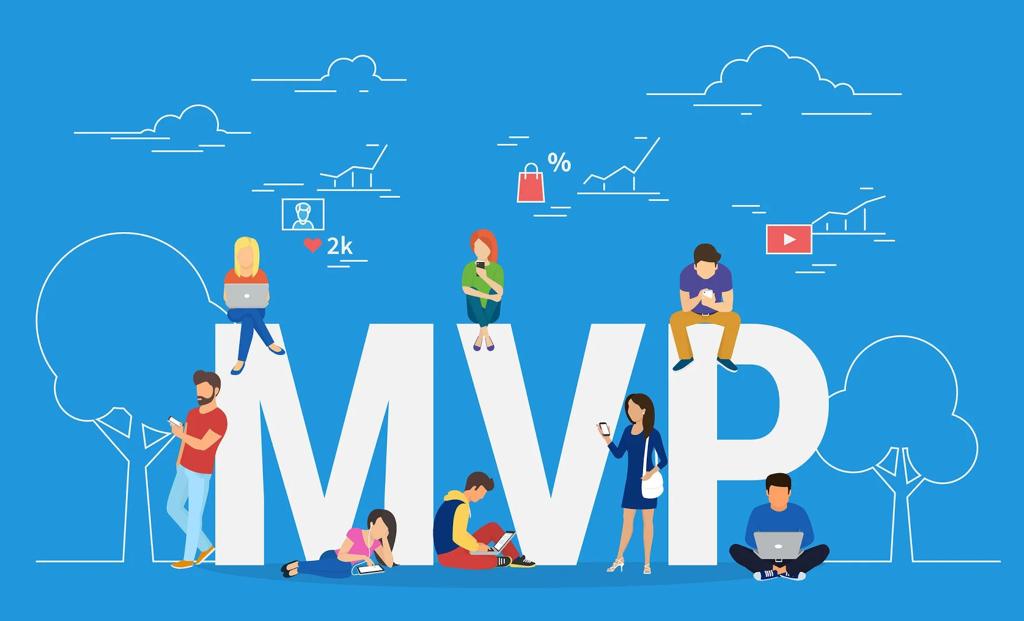The article launching a Startup without Technical Knowledge discussed that you must create the minimum available product (MVP) before expending to produce the main software to ensure that the final product will be successful.
This article describes the Minimum Viable Product’s definition, its difference from the demo and prototype, and the steps to build an MVP.
What Is Minimum Viable Product?
One of the essential concepts in entrepreneurship is the Minimum Viable Product, which is called MVP for short. The term refers to a product that has the minimum features necessary to offer it to the customer. MVP is a tool for testing hypotheses and learning in the entrepreneurial process.
In the Startup Owner’s Manual, Steve Blank defines MVP as “the least features that can help a customer get good feedback.”
And Eric Rice, author of Lean Startup, defines the concept: “A minimum product is a version of a new product that helps a team achieve maximum credible customer learning with minimal effort.”

According to the above, MVP is the least we can show the customer to see the feedback. Based on this, startup owners test their assumptions. So MVP is not necessarily an initial or incomplete version of the final product.
Creating a product with many features is challenging and time-consuming. It can also fail. But producing an MVP helps entrepreneurs test their hypothesis with minimal effort and cost. The minimum acceptable product has the necessary features to expand the product in the future.
Developers usually offer this product to a subset of potential customers. Through the feedback they receive, they can gain the right perspective on the prototype and marketing-related information. This prevents products from being not welcomed by customers.
The MVP vs. prototype vs. demo
- MVP: We build the minimum acceptable product to test the business model and get feedback to learning from the customer.
- Prototype: A prototype is a handmade version of the original product and tests its technical aspects in terms of production feasibility.
- Demo: The demo version is an example of the original product that we provide to the customer after starting the business to familiarize him with the product’s functions.
As the compliments show, these three definitions are entirely different, and each has its own purposes.

The goals of an MVP
The main goals that the entrepreneur achieves from making MPV are as follows:
- Testing the product hypotheses with minimal resources
- Accelerating learning
- Shortening product delivery time
- Creating a prototype and developing its features in the future
- Removing attributes that are not of interest to the customer.
- Demonstrating the capabilities of the development team in creating the required product
Examples of MVP
A famous example of an MVP is the DropBox.
In 2007, Arash Ferdowsi and Drew Houston, the site’s founders, measured users’ interest by releasing a 2-minute video showing the value proposition before launching their product. MVP brought them 75,000 requests to use a product that did not yet exist!
Steps to build an MPV for a site
In the lean startup, we have a Build-Measure-Learn loop. Minimum Acceptable Product is the fastest and easiest way to go through this loop. It gives the customer a product that is valuable, economical, and credible to meets his needs.
Step # 1- Discovering Your Purpose
Put yourself in the customer’s shoes and ask yourself two questions:
- Why do I need this product?
- How does this product help me?
The answers determine the customer needs and the purpose of building the product.
Step # 2- Get to know your competitors.
If there are software and products similar to yours on the market, you need to analyze them well and find their strengths and weaknesses.
Step # 3: Specify user flow to build an MPV
To build an MPV, Determine the path that the customer is going through to reach their goal. For example, if your idea is to produce software to organize people’s daily purchases: finding the items, buying them, managing orders, and delivering them are your user flow. At this stage, do not focus on the details and only establish a comfortable and attractive path for the user.

Step# 4: Make a list of essentials.
Once you have determined the customer flow, you should list the essential features of each section to build an MPV. Put the most needed features at the top and the less important ones at the bottom. Finally, build the details according to the features’ priority. Don’t forget that you have to take care of everything on your list.
Step #5: Build, try, and change.
Once you determined the initial design, it is time to try it out. This section contains two phases: alpha and beta.
In the alpha section, engineers test the quality of the software and discuss its problems. After fixing the issues and in the beta section, the product will be available to users, and their feedback will be reviewed within 1 or 2 weeks. Finally, engineers solve the problems to produce the final software. They may repeat the testing and learning process several times to make a perfect product.
Keep in mind that if you are a non-technical founder, you should seek help from a third party at this stage.

